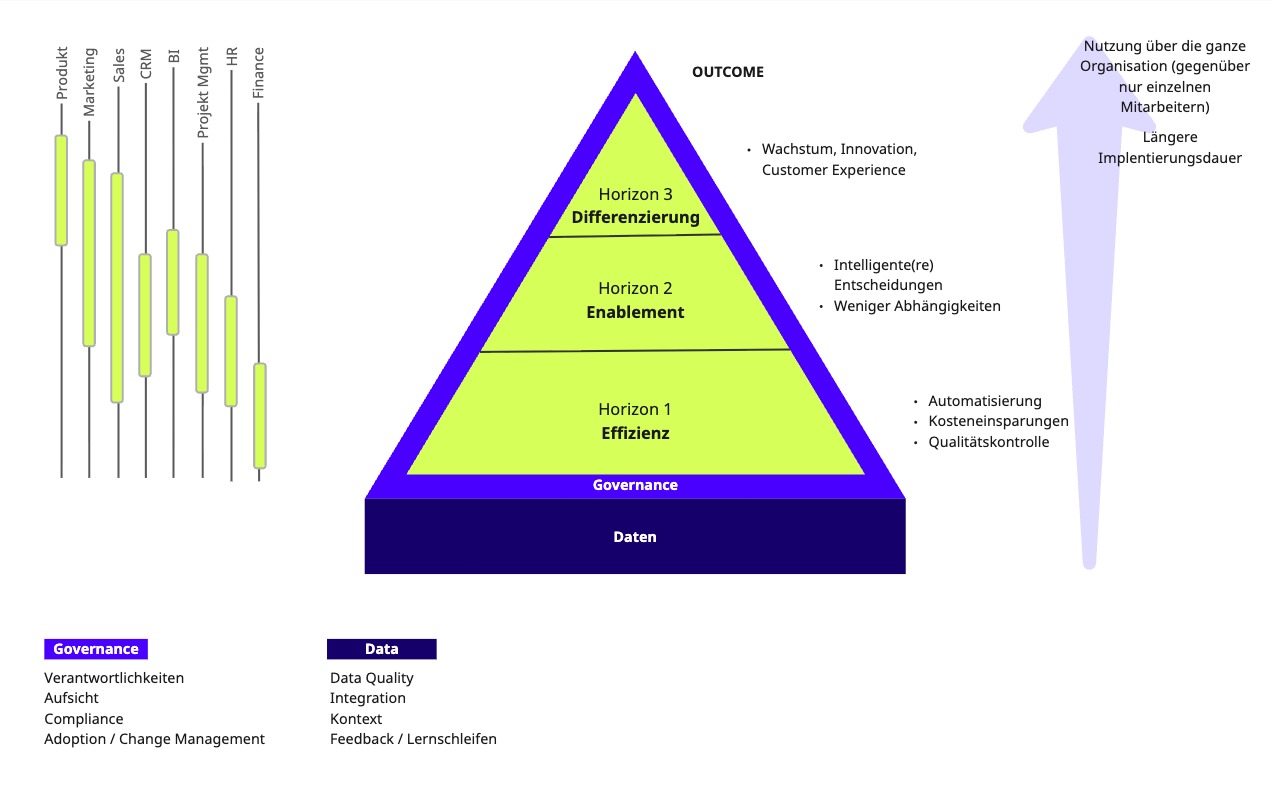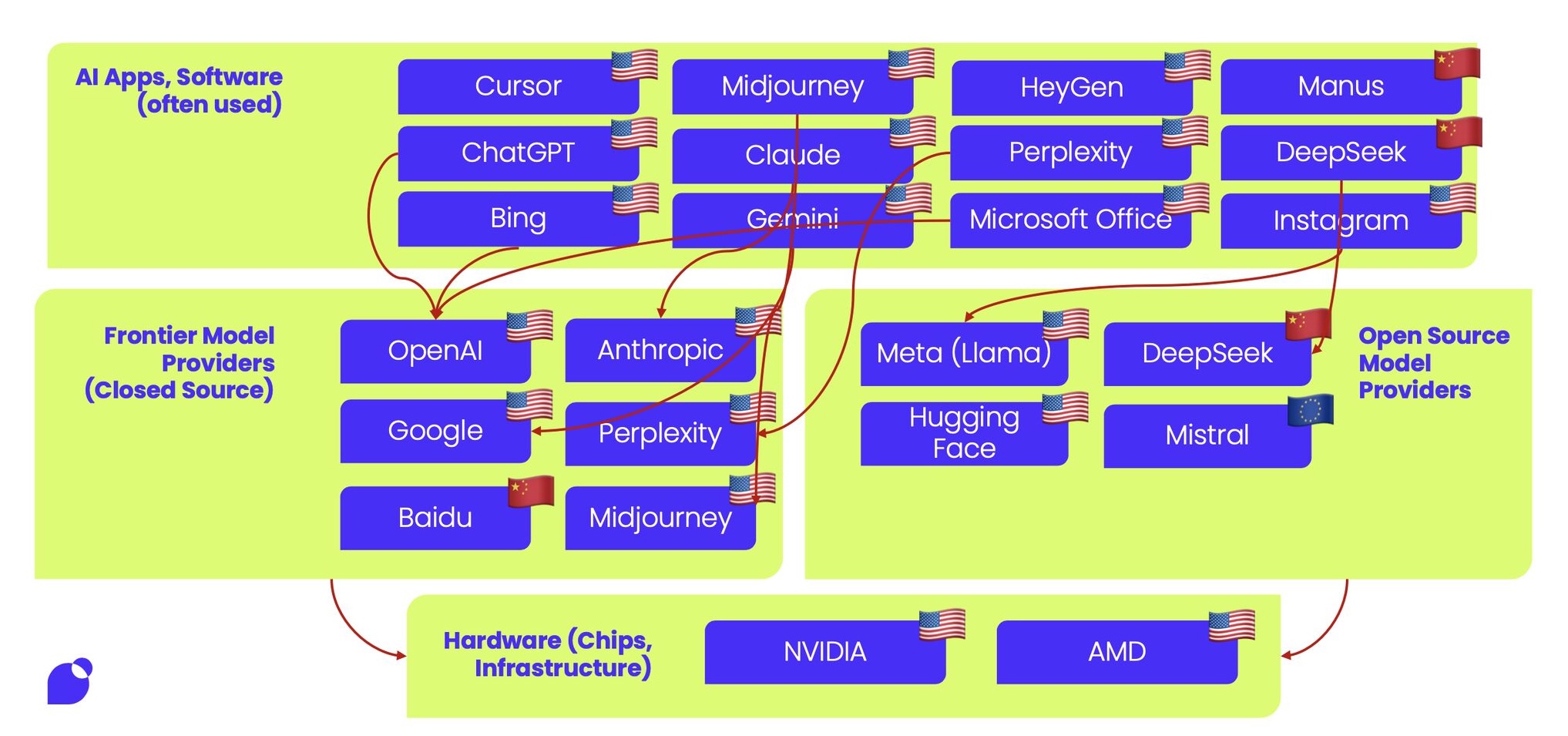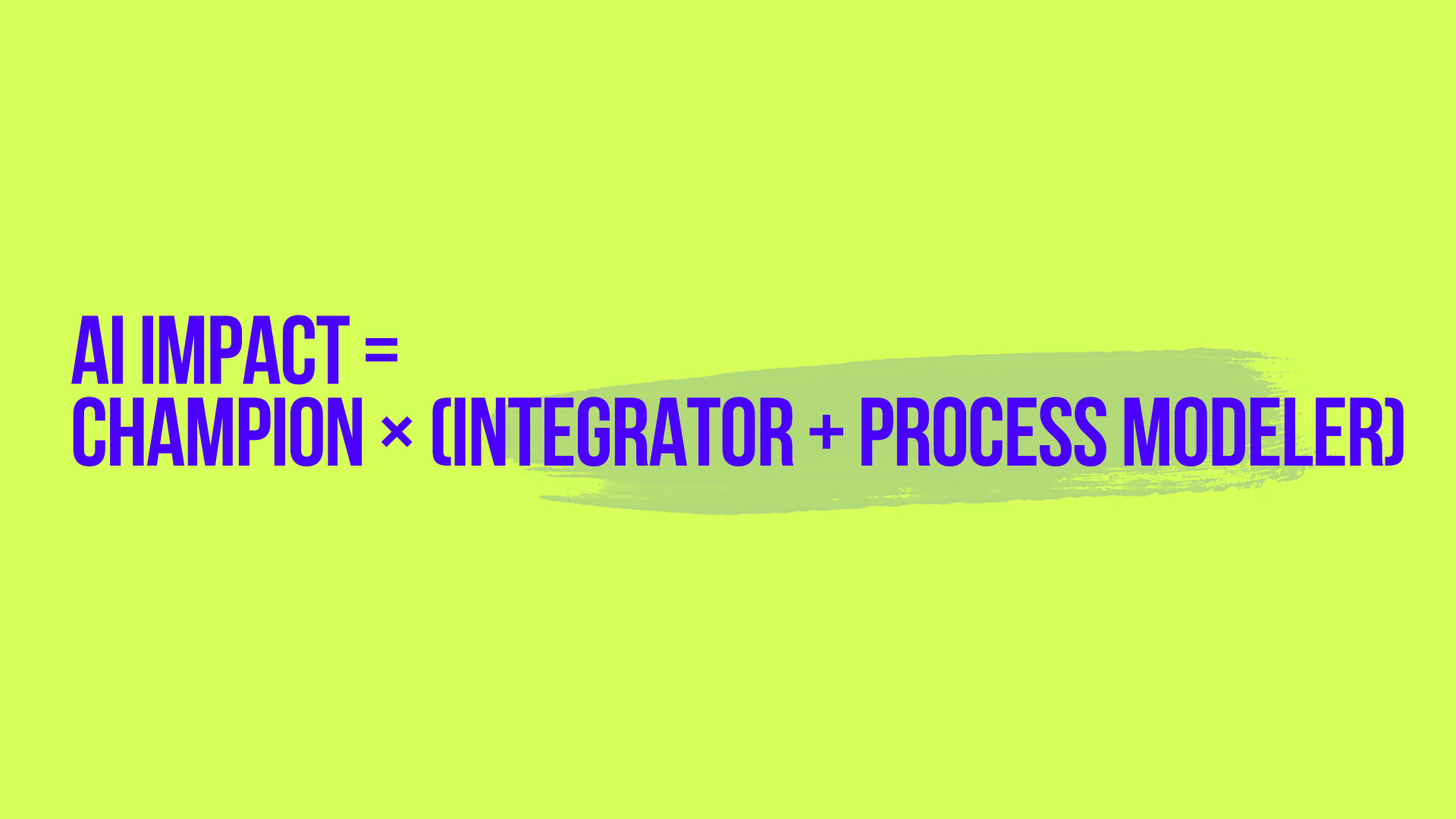The AI Use Case Canvas
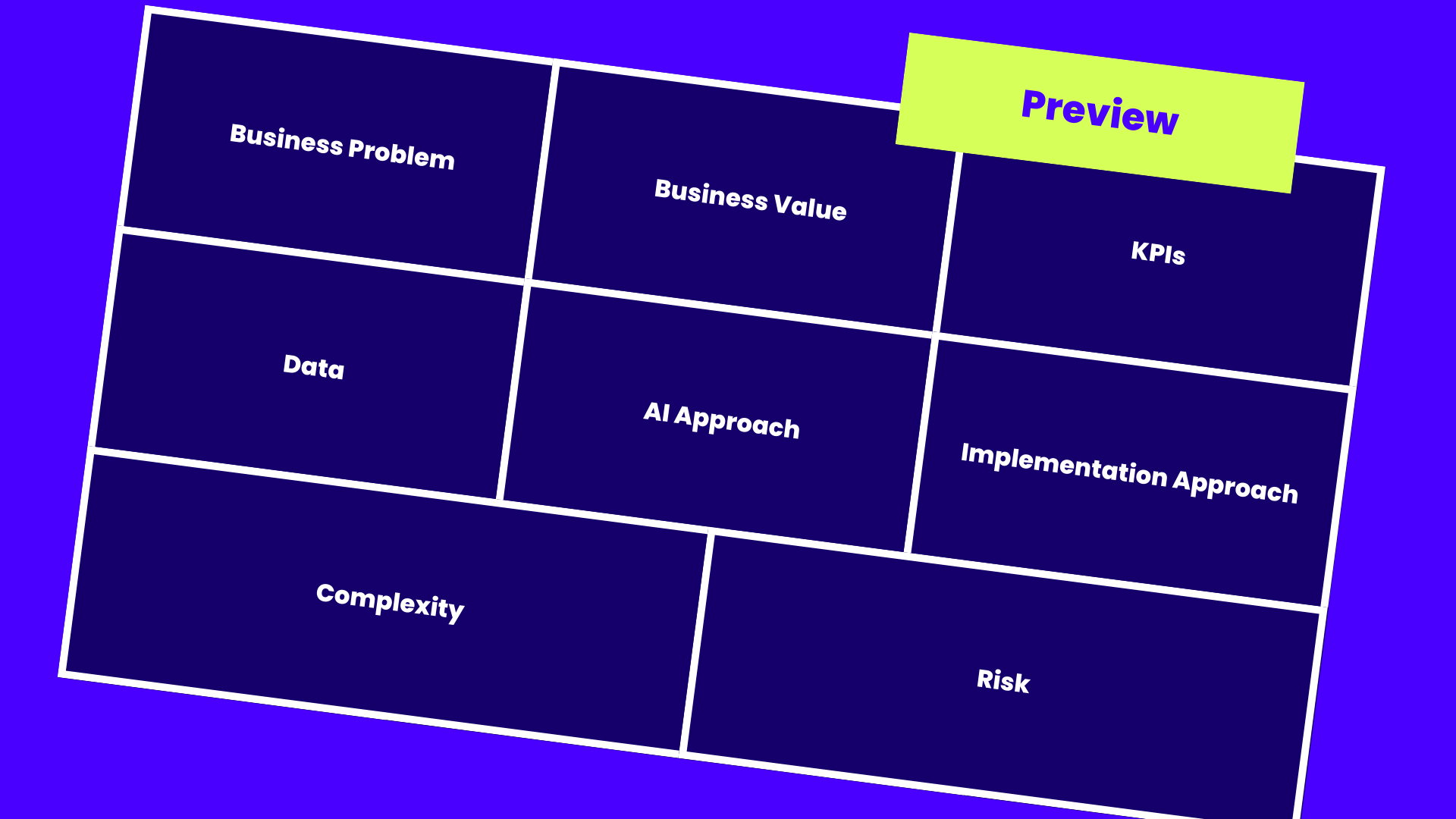
Or: When Does It Actually Make Sense To Implement AI In Your Business
We’ve all seen it: companies rushing into AI projects that look impressive in demos but fail to deliver real business value. The technology works perfectly. The business case doesn’t.
Sound familiar?
Companies everywhere are rushing into AI without a clear strategy, spending budgets on technology that solves problems that weren’t important. The issue isn’t the AI itself, but rather the lack of strategic thinking before implementation.
Why AI-First Thinking Can Be Deceptive
When you’re a hammer, everything looks like a nail. That’s exactly what I’m seeing with AI adoption today. Organizations see the latest AI breakthrough and immediately ask, “How can we use this?” instead of starting with “What problems do we actually need to solve?”.
While that’s understandable, given how new AI still is to many businesses, this approach leads to:
- Solutions looking for problems
- Impressive demos that don’t translate to business value
- Projects that work well, but are harmful to a firm’s reputation or cross that not adhere to data privacy laws
Introducing the AI Use Case Canvas
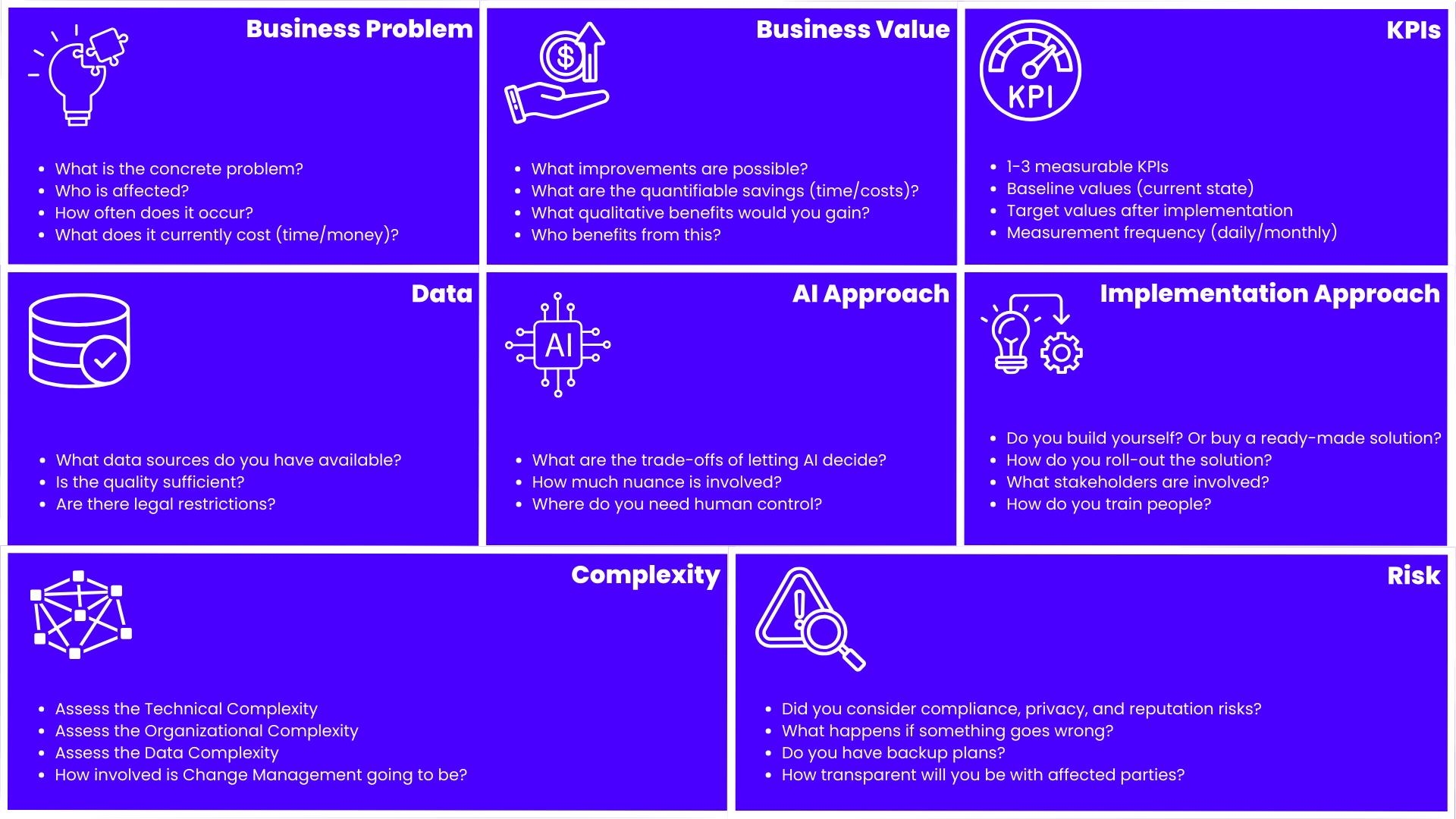 The AI Use Case Canvas: A strategic framework for evaluating AI opportunities before implementation
The AI Use Case Canvas: A strategic framework for evaluating AI opportunities before implementation
To fix this, I developed the AI Use Case Canvas; a strategic framework that forces you to think through the business fundamentals before writing a single line of code.
Think of it as a business model canvas, but specifically designed for AI decision-making.
The canvas addresses 8 critical areas across three key dimensions:
- WHY? - (Problem + Value + KPIs)
- HOW? - (Data + AI Approach + Implementation)
- AT WHAT COST? - (Complexity + Risk)
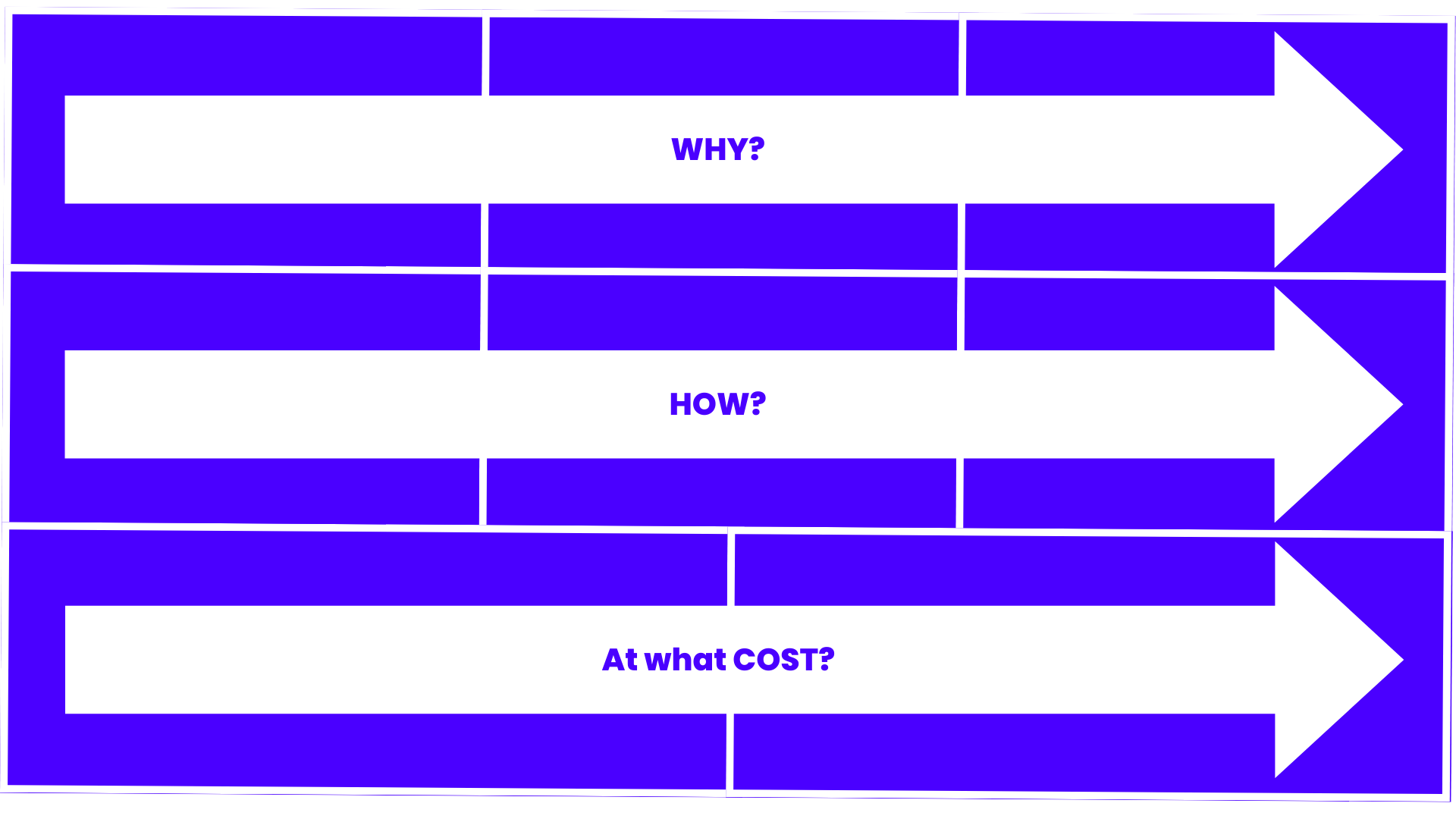 8 critical areas across three key dimensions
8 critical areas across three key dimensions
Let me walk you through each section.
The WHY Dimension: Building the Business Case
1. Business Problem
Start here. Always.
Key questions:
- What is the concrete problem?
- Who is affected?
- How often does it occur?
- What does it currently cost (time/money)?
Rate the problem (1-5 scale):
- Urgency: 1 = low, 5 = critical
- Frequency: 1 = rare, 5 = daily
If you can’t clearly articulate the problem or rate it as urgent/frequent, stop here. No clear problem means, there’s no need for AI solution.
2. Business Value
What would actually change if you solved this problem?
Key questions:
- What improvements are possible?
- What are the quantifiable savings (time/costs)?
- What qualitative benefits would you gain?
- Who benefits from this?
Rate the value (1-5 scale):
- Expected ROI: 1 = low, 5 = very high
- Strategic importance: 1 = nice-to-have, 5 = business-critical
If the value is unclear, why even get started?
3. Success Metrics (KPIs)
How will you know if you’ve actually solved the problem?
Define:
- 1-3 measurable KPIs
- Baseline values (current state)
- Target values after implementation
- Measurement frequency (daily/monthly)
If you can’t measure it, you can’t manage it.
The HOW Dimension: Implementation Strategy
4. Data Requirements
AI needs data. Good AI needs good data. Not all data can be legally used.
Check your data foundation:
- What data sources do you have available?
- Is the quality sufficient?
- Are there legal restrictions?
Data classification checklist:
Here you assess, which category the data falls under. The further down you check the box, the more constraints you face using the data.
- ☐ Publicly available
- ☐ Internal, non-personally identifiable
- ☐ Internal, anonymized
- ☐ Internal, personally identifiable
Not all data is equal.
5. AI Approach
Choose your automation level carefully.
Automation options:
- ☐ Autonomous (no human control)
- ☐ Human-in-the-loop (AI suggests, human decides)
- ☐ Supporting (AI supports decision-making)
Key questions:
- What are the trade-offs of letting AI decide?
- How much nuance is involved?
- Where do you need human control?
If the AI goes rogue, how bad would that be?
6. Implementation Approach
How will your organization actually roll this out?
Key questions
- Do you build yourself? Or buy a ready-made solution?
- How do you roll-out the solution?
- What stakeholders are involved?
- How do you train people?
Rollout strategy:
- ☐ Pilot (small test)
- ☐ MVP (Minimum Viable Product)
- ☐ Full rollout
Resource approach:
- ☐ Buy (external solution)
- ☐ Build (internal development)
- ☐ Partner (collaboration)
Even the best solution fails if not rolled out well.
The COST Dimension: Understanding the Full Picture
7. Complexity
Complexity equals time, and time equals money.
Assess on a 1-5 scale:
- Technical complexity: 1 = simple, 5 = very complex
- Organizational complexity: 1 = few stakeholders, 5 = many departments
- Data complexity: 1 = readily available, 5 = dispersed
Key factors to consider:
- Integration requirements
- Training needs
- Change management
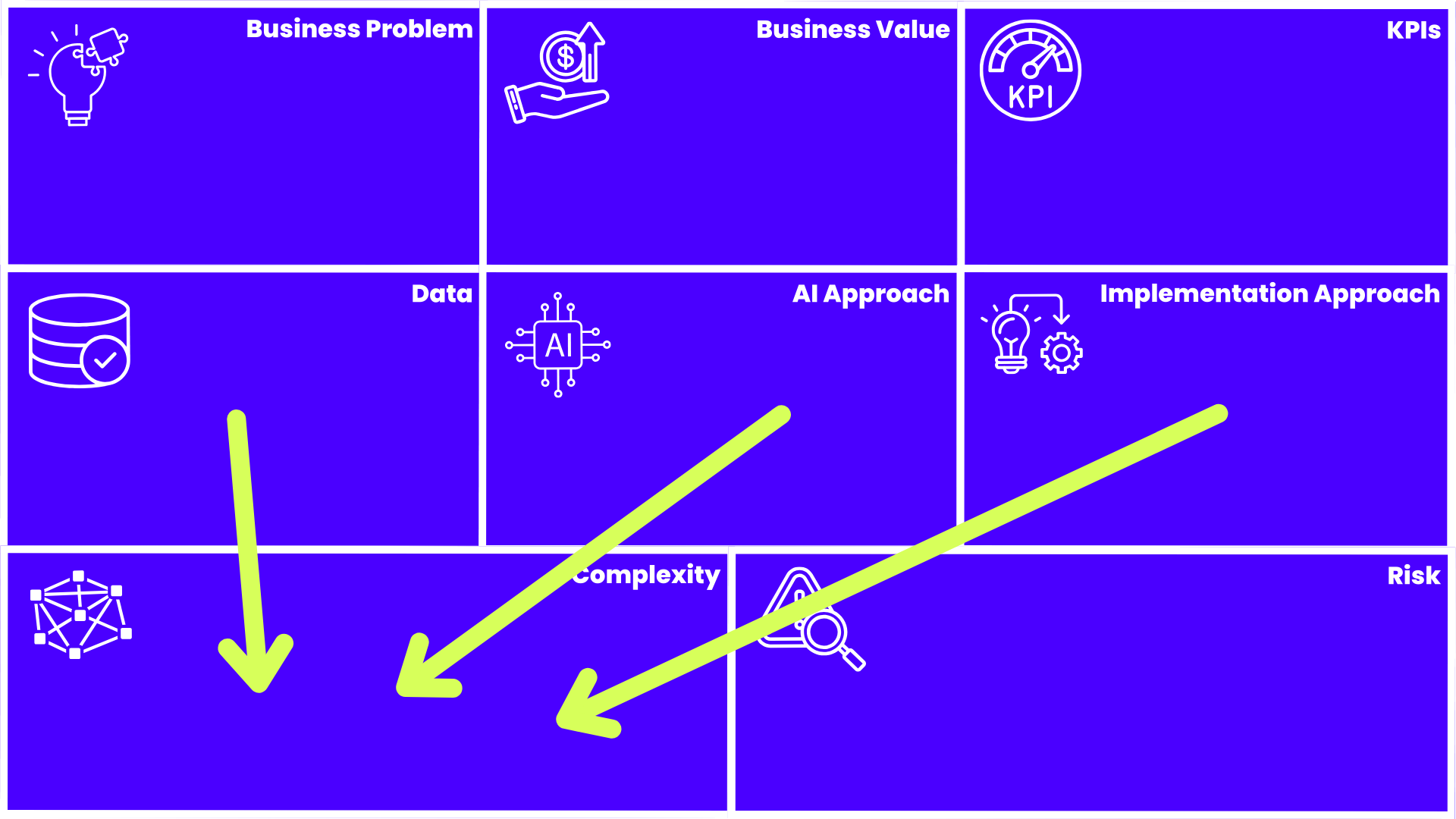 Complexity should map factors from all three fields in the HOW dimension
Complexity should map factors from all three fields in the HOW dimension
Why complexity matters across all HOW dimensions:
Don’t make the mistake to just assess how technically complex the project is. Instead, make sure to assess how the three HOW dimensions interact to create implementation challenges. Your data complexity affects what AI approaches are feasible, your chosen AI approach influences implementation strategy, and your implementation approach determines organizational complexity. For example, a technically simple chatbot becomes complex when it requires integrating data from five different systems (data complexity) and rolling out across multiple departments with different workflows (organizational complexity). By mapping complexity factors from all three HOW fields, you get a realistic picture of what you’re actually committing to, not just what the technology demo showed you.
8. Risks
What could go wrong, and how bad would it be?
Assess on a 1-5 scale:
- Compliance risk: 1 = uncritical, 5 = regulatory relevant
- Privacy risk: 1 = no personal data, 5 = sensitive data
- Reputation risk: 1 = internal, 5 = publicly visible
Additional considerations:
- What happens if something goes wrong?
- Do you have backup plans?
- How transparent will you be with affected parties?
Adjust your KPIs
Your KPIs should tell a complete story - not just about the benefits you’re gaining, but also about the risks you’re managing. While it’s tempting to focus only on positive metrics like efficiency gains or cost savings, the most robust AI implementations track both sides of the equation. For example, alongside measuring response time improvements in customer service, you should also monitor accuracy rates, customer satisfaction scores, and escalation frequencies. This dual approach helps you catch problems early - if your AI is getting faster but less accurate, or more efficient but creating customer frustration, you’ll know before it becomes a bigger issue. The best KPIs create a balanced scorecard that ensures your AI solution is truly adding value, not just moving problems around.
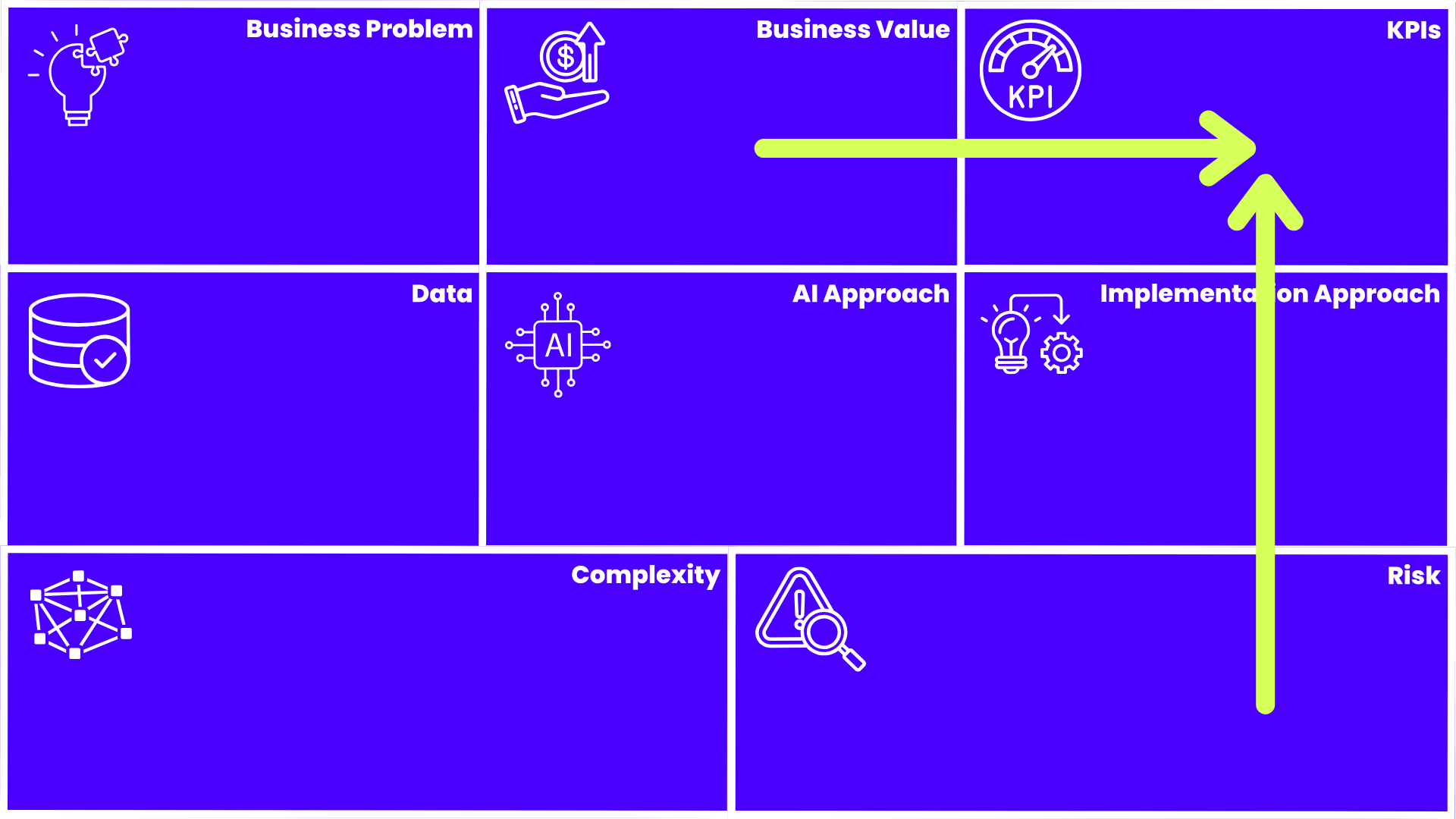 KPIs should measure both the value and the risk
KPIs should measure both the value and the risk
Using the Canvas: A Step-by-Step Guide
- Work through each field systematically, starting with the WHY dimension
- Evaluate whether you have:
- A good reason to pursue this (WHY?)
- The means to execute it (HOW?)
- Acceptable complexity and risks (AT WHAT COST?)
- If all looks good, start small with a pilot project
The Canvas in Action: A Real Example
Let me show you how this works with a real scenario:
- Problem: Customer service team spends 3 hours daily answering repetitive questions from customers
- Value: Team could save 15 hours/week, improve response time, while increasing morale.
- KPIs:
- Average response time (baseline: 2 hours, target: 30 minutes)
- Employee survey satisfaction scrore (baseline: 6/10 hours, target: 7.5/10)
- Response quality (baseline: 8% re-opened tickets, target: 8%; no increase)
- Data: Have 2 years of support tickets, personal data from email headers has to be scrubbed before processing
- AI Approach: Human-in-the-loop (AI suggests responses, agent approves)
- Implementation: Start with pilot for 1 product line, assess full roll-out after 3 months
- Complexity: Medium technical (data anonymization), low organizational
- Risk: relatively low across all dimensions
Result: Clear go/no-go decision based on strategic thinking, not technology hype.
Your Next Steps
Before you launch your next AI initiative:
- Download the AI Use Case Canvas Template
- Gather your team and work through each section
- Be honest about the ratings. This only works if you’re realistic
- Start small if you decide to proceed
- Learn more about the methodology in my upcoming book
Remember: It’s better to solve a small problem completely than to partially solve a big one.
Ready to Get Started?
The canvas takes about 30 minutes to complete but can save months of wasted development time. Most importantly, it helps you build AI solutions that people actually want and use.
Get a clear roadmap in just 4 hours
Want to run this process efficiently? I’ll facilitate a half-day, moderated workshop with your team to produce a concrete, actionable roadmap. You’ll leave with prioritized use cases and a clear plan for rolling them out in your organization.
Interested? Get in touch!


